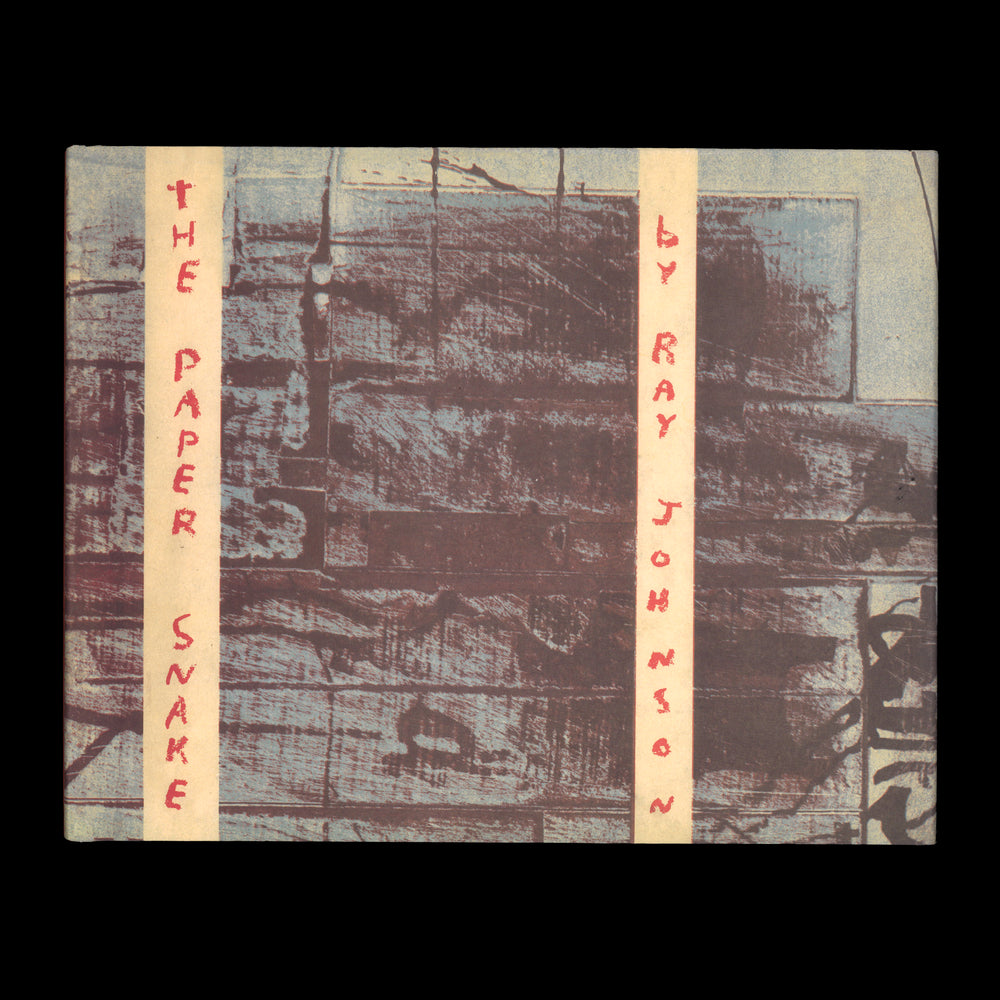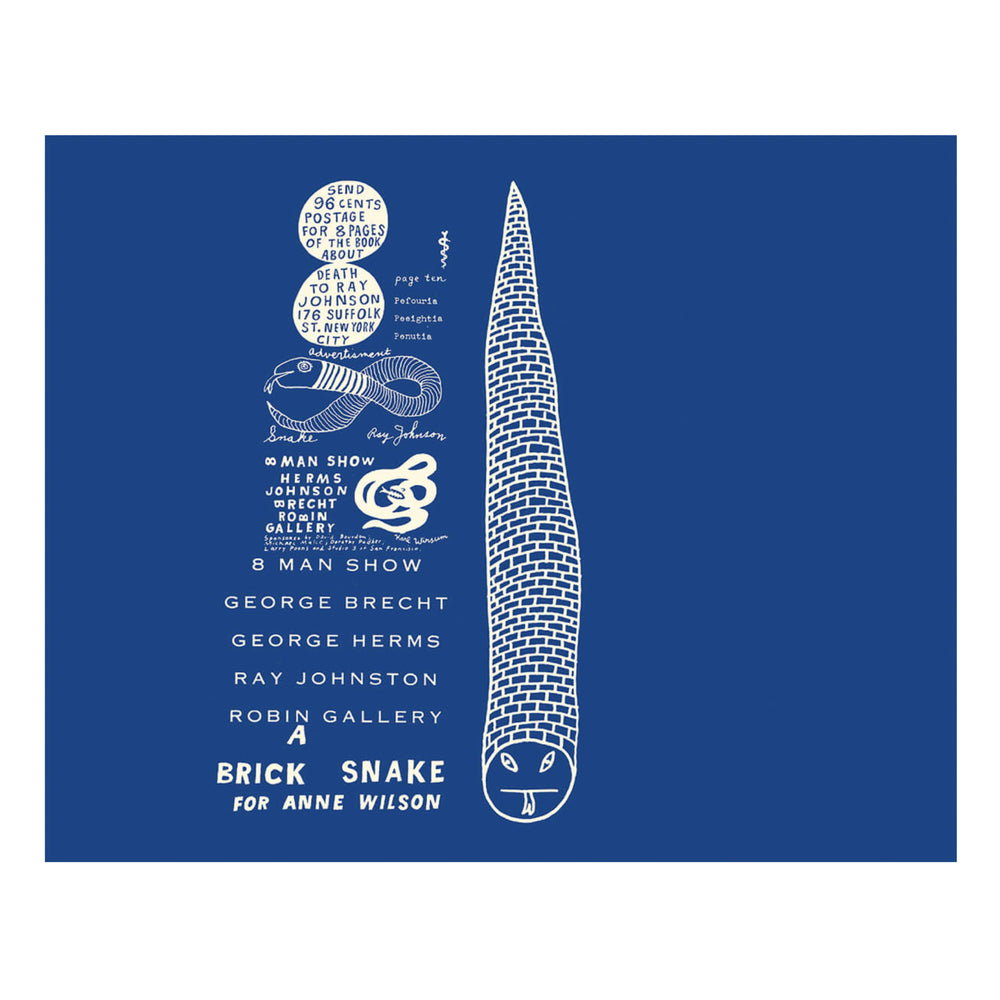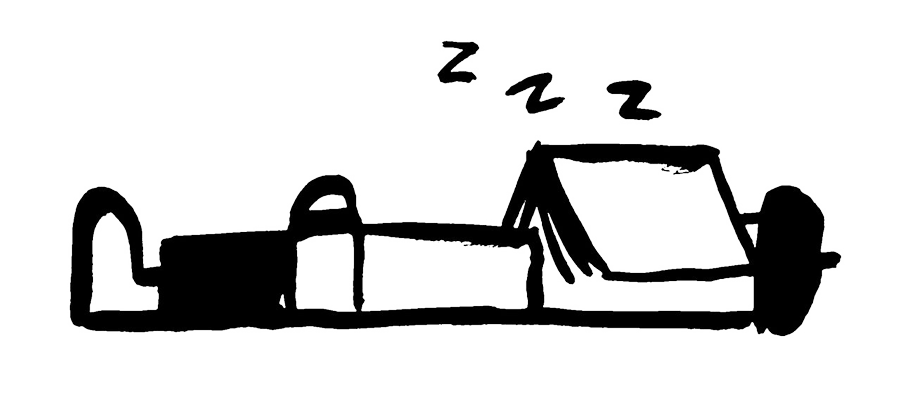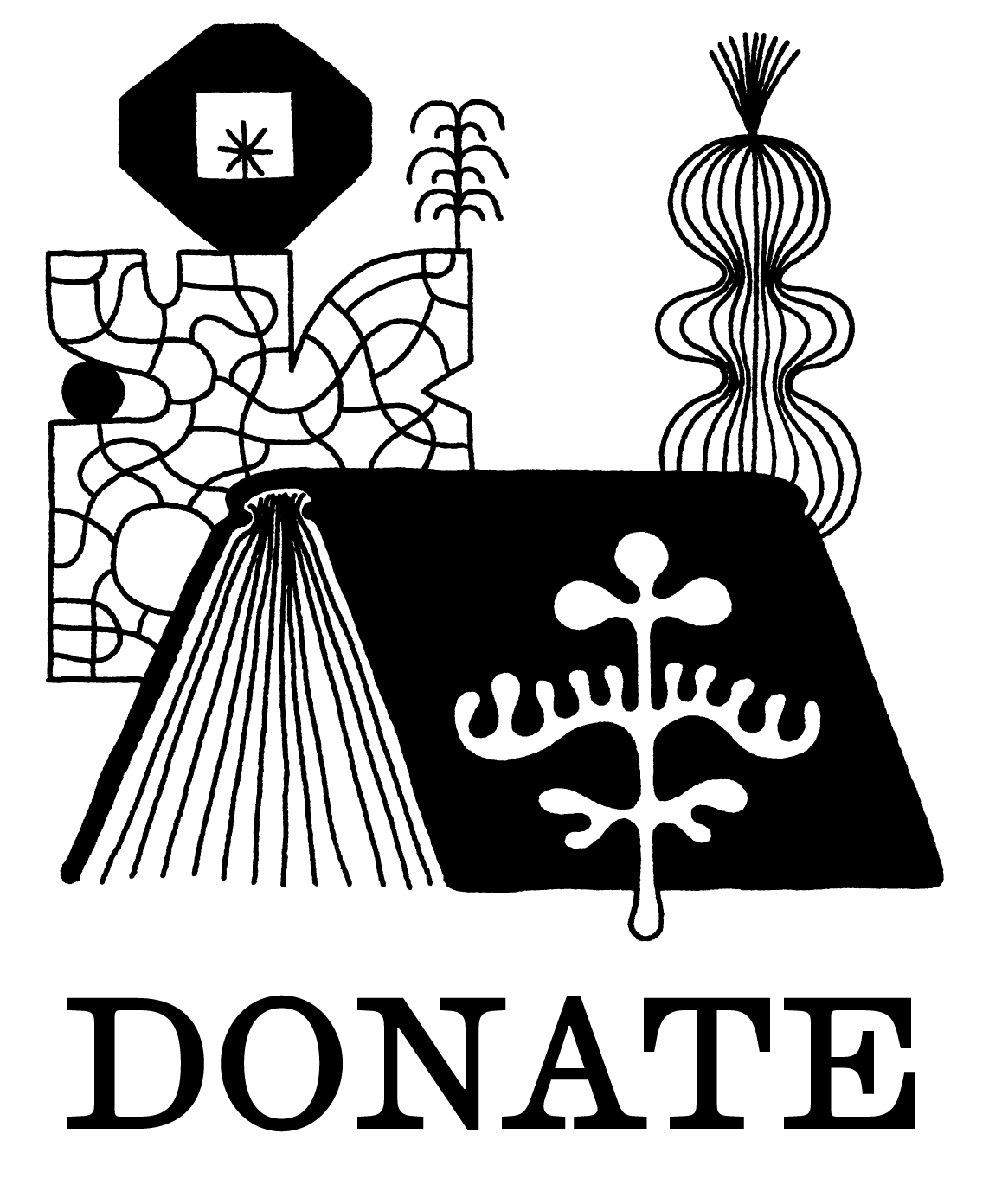



| Title | The Paper Snake |
| Author(s)/Editor(s) | Ray Johnson |
| Publisher | Siglio Press |
| Pages | 48 |
| Dimensions | 221 x 277 mm |
| Format | Hardcover |
| Year | 2014 |
Long out of print (and coveted by Ray Johnson fans), The Paper Snake is an essential work in Johnson’s oeuvre and the second title published by Dick Higgins’s extraordinary Something Else Press in 1965. A vertiginous, mind-bending artist’s book, The Paper Snake was far ahead of its time in its subversive and exuberant confluence of art and life. Assembled and designed by Higgins from his amassed collection of Johnson’s letters, tid-bits and artworks (said Johnson: “all my writings, rubbings, plays, things that I had mailed to him or brought to him in cardboard boxes or shoved under his door, or left in his sink, or whatever, over a period of years”*), The Paper Snake connects disparate elements to unbed fixed relationships and forge new systems of meaning by means of scissors, paste and the American postal system.
The first principle of Ray Johnson’s art is that anything isolated is beautiful, albeit opaque. The second principle is that meaning awakens in that isolated beautiful thing when it is juxtaposed to something like it (counterparts, like rhymes, for the romantic; counterpoints, like puns, for the ironic). Ray Johnson said, “I deal in invisibilities and anonymities.” He said, “Andy Warhol says my snakes aren’t snakes—they’re worms because they aren’t lifesize. But some of my snakes are imaginary and inarticulate snakes, and what is lifesize about inarticulateness?” To Dick Higgins he has written, “I want to live and die like an egg.” Ray Johnson’s art is always see and say, show and tell; it is also imaginary, inarticulate, and egg-shaped.
—William S. Wilson, from his introduction to The Paper Snake
A new essay by Frances F. L. Beatty, Director of the Ray Johnson Estate, and Elizabeth Zuba is included as a separate insert, and in the spirit of the original, the print run is the same (1840 copies). This reprint is four-color offset, a different method than the original in which Higgins used a two-color process with innovative ink combinations. Read more about Higgins’ original publication of The Paper Snake at the Black Mountain Museum and Arts Center.
RAY JOHNSON (1927–1995), continues to be revealed as one of the most quietly consequential figures in American contemporary art. An influential pioneer of Pop art, Conceptual art and Mail art (though he eschewed all of these monikers), Johnson’s extrasensory perception and insatiable curiosity resulted in an immense body of work that spans collage, correspondence, performance, sculpture, drawing, painting and book arts. A graduate of Black Mountain College (1945-48), Johnson also created an alternative network of collaborative art known as “The New York Correspondence School” in 1968, and is considered the founder of Mail Art. Despite sharing major exhibitions between 1957-1978 (with the likes of Duchamp, Jasper Johns, Robert Rauschenberg, Allan Kaprow and Andy Warhol, among others) as well as having important solo shows at major galleries and museums (such as at The Whitney in 1970), Johnson systematically refused or flouted most opportunities to popularize his work through mainstream art commerce. On January 13, 1995 Johnson leapt from the Sag Harbor bridge in Long Island in an apparent suicide.
about the editor
ELIZABETH ZUBA has edited or translated several books of artists’ writings including My Ogre Book, Shadow Theater, Midnight by Marcel Broodthaers (Siglio) and Ray Johnson’s Art World (Feigen & Co.) She is also the author of two works of poetry.

